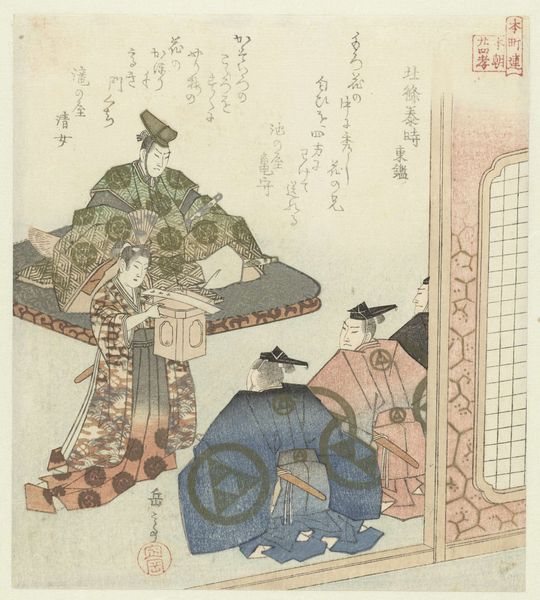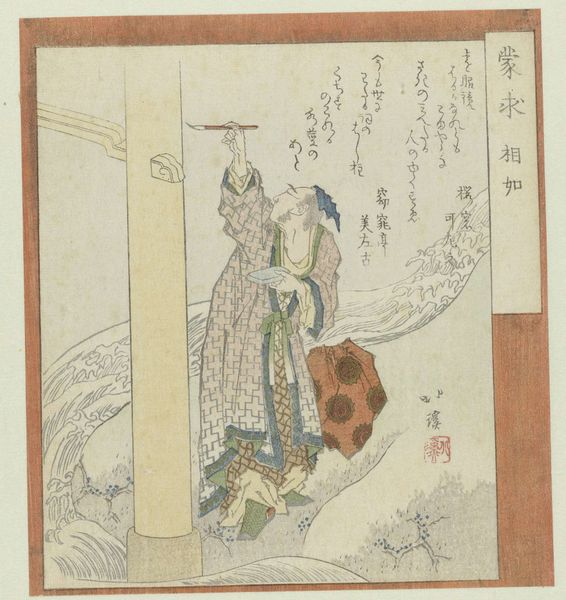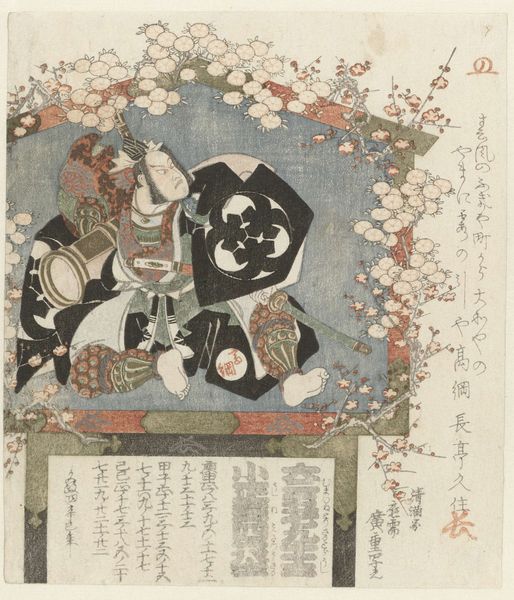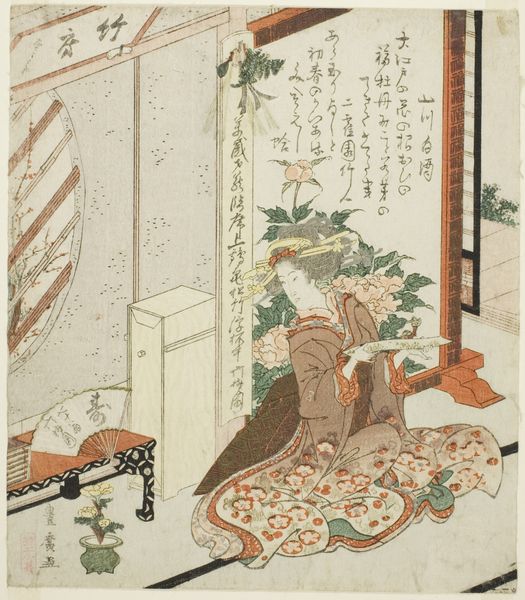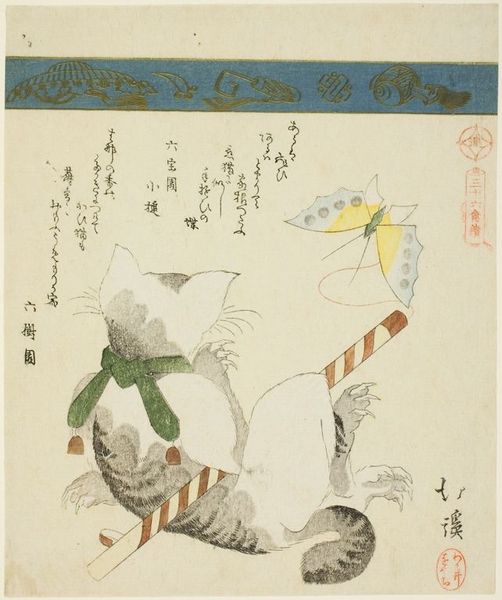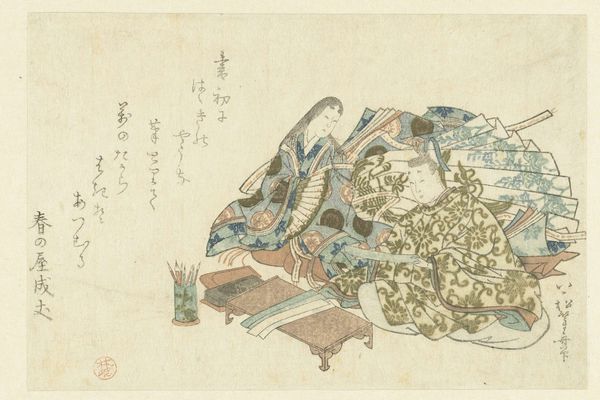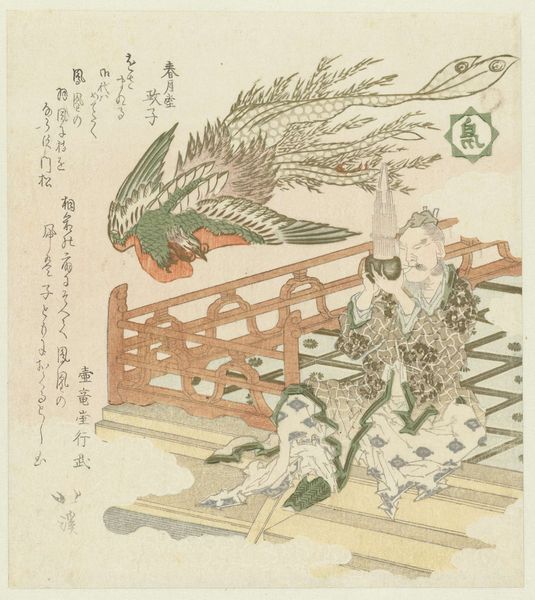
print, woodcut
#
portrait
# print
#
asian-art
#
landscape
#
etching
#
ukiyo-e
#
figuration
#
woodcut
Dimensions: height 201 mm, width 183 mm
Copyright: Rijks Museum: Open Domain
Editor: So this is Totoya Hokkei's "Wind," a woodcut print from around 1822. There’s this serene figure lounging with a peculiar headdress, surrounded by delicate blossoming branches. It feels both intimate and a little... enigmatic. What do you see in this piece that maybe I’m missing? Curator: Ah, "Wind"... To me, Hokkei captures that delicious pause where nature's whisper transforms into tangible form. The seated figure, perhaps a poet or scholar, isn’t merely observing, they're *becoming* the wind. The upturned face, that jaunty parasol caught just so, they’re all swept up in a whimsical ballet orchestrated by the unseen currents. Notice the plum blossoms, symbols of resilience and spring; they mirror the figure's own adaptability. Does it not feel as if they're both dancing to the same tune, albeit one only the heart can hear? Editor: That’s a lovely way to put it, becoming the wind. I was so focused on the individual elements, I missed the overall sense of movement. And I didn’t know about the plum blossoms. Curator: Isn’t it always the way with art? A gentle reminder that we, too, are part of this cosmic dance, bending but never breaking. Perhaps the greatest masterpieces aren't just seen, but felt – like a soft breeze on a summer's day. Editor: I agree. Now that you mention it, I can almost feel a gentle breeze too. Thanks, that's really enhanced my understanding. Curator: My pleasure. Art should stir something within you, hopefully "Wind" leaves you feeling just that, moved.
Comments
No comments
Be the first to comment and join the conversation on the ultimate creative platform.

